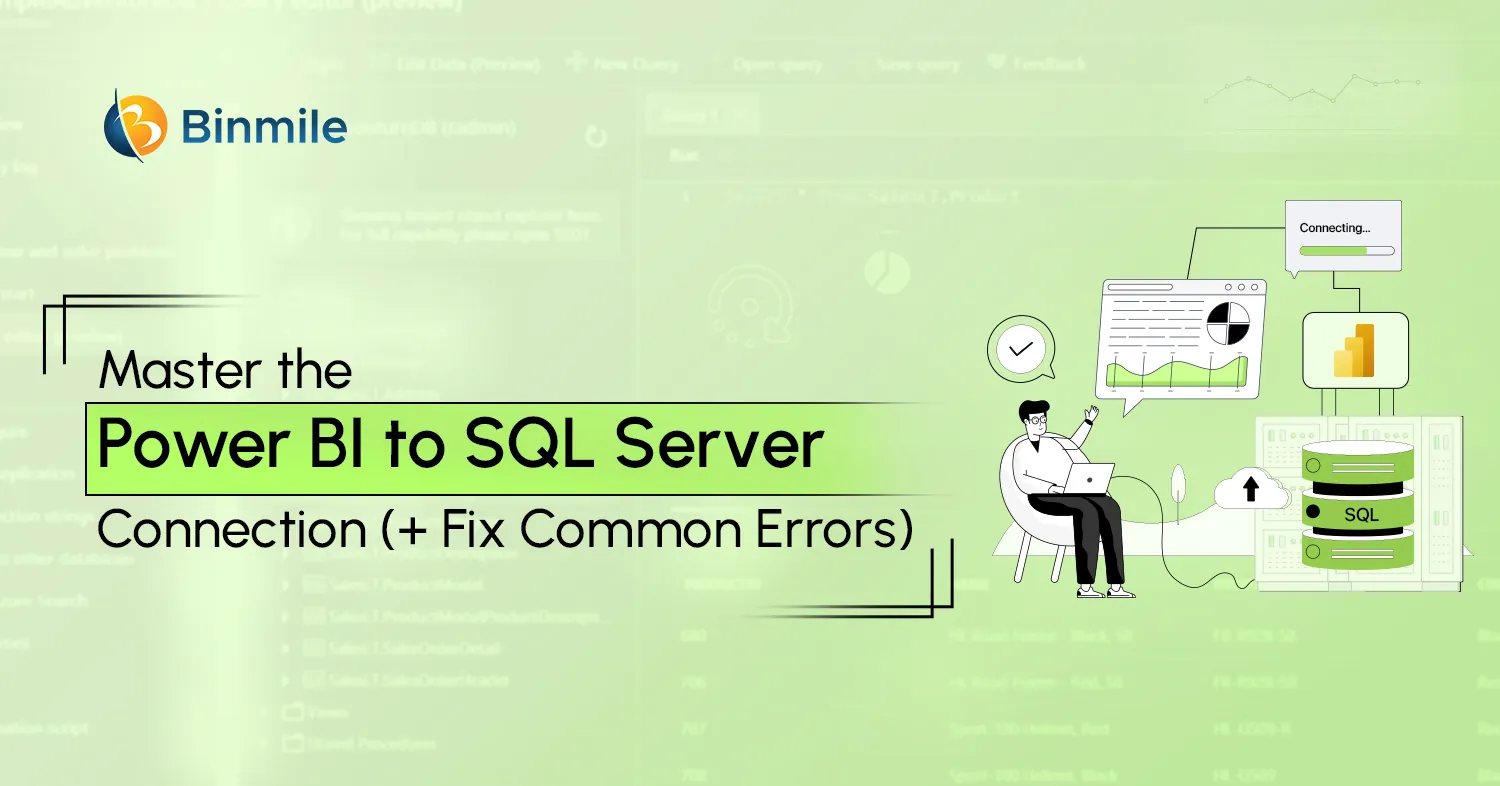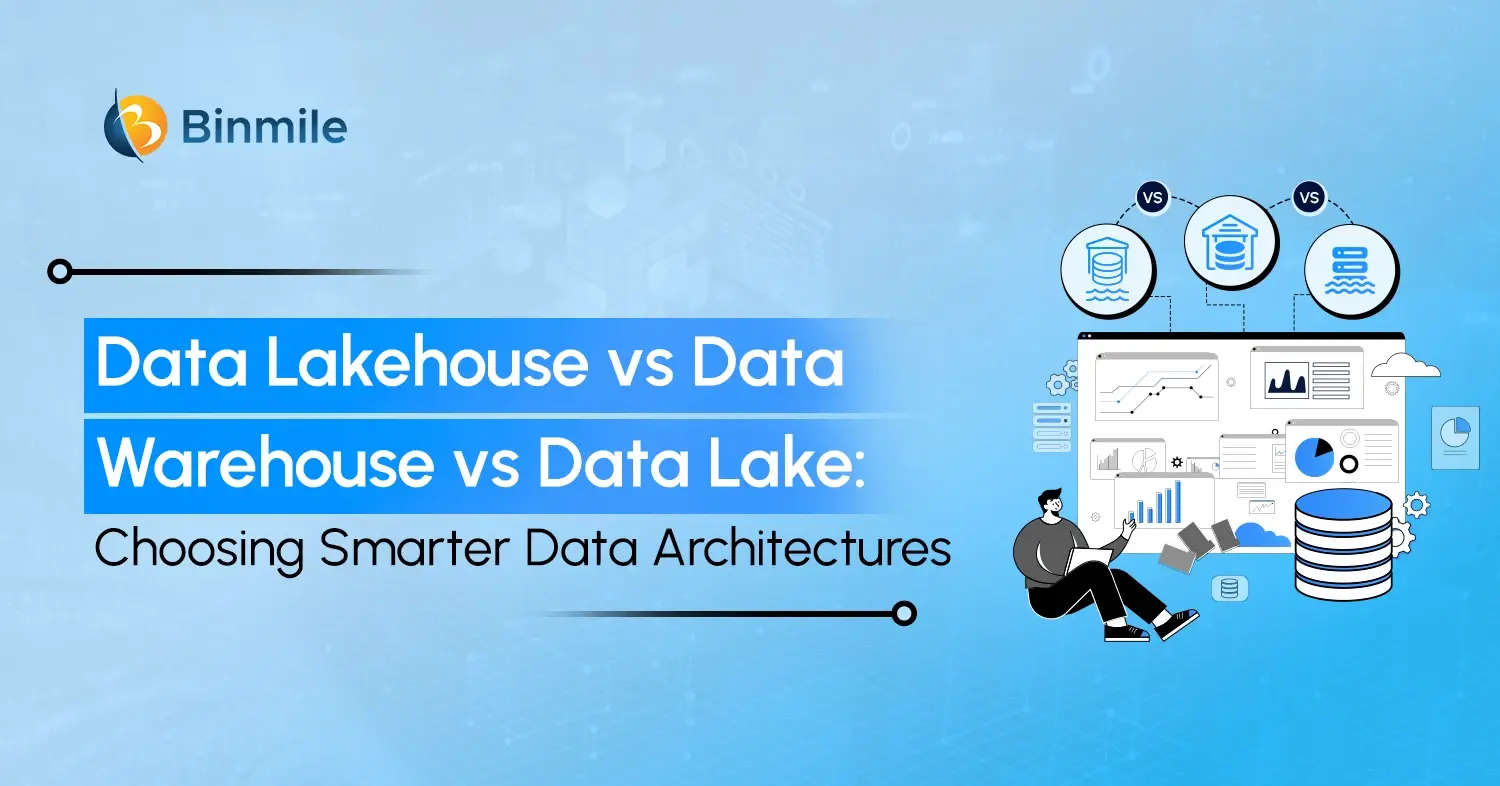If your Power BI reports aren’t refreshing or your SQL Server connection keeps failing, you’re not alone. Connecting Power BI to SQL Server is a common setup for businesses that rely on SQL databases for storing and managing data, but it isn’t always straightforward. Power BI is a powerful business intelligence tool that turns raw data into interactive reports and insights. One of its key strengths is the ability to connect directly to data sources, such as SQL Server, providing real-time access, automated reporting, and unified dashboards without the need for manual exports or switching platforms.
But here’s the thing: this connection only works if you set it up right. You need the correct configuration to ensure secure access, smooth data refreshes, and reliable reporting. How do you successfully connect Power BI to SQL Server? Relax, we’ve got you covered! In this blog, we’ll explore the practical, step-by-step process for Power BI connection to SQL Server, including common connection errors to watch for and how to resolve them.
What is Power BI?
Power BI is a software application that empowers organizations to create, share, and understand raw data into meaningful, visually immersive, and interactive insights. Since the BI platform is designed on a “low-code tools” approach, businesses can efficiently utilize data analytics services with minimal or no code writing.
Top 6 Reasons to Connect Power BI Directly to SQL Server
- Gain live access to your data by eliminating manual exports with real-time synchronization between your database and reports.
- Keep your dashboards always up to date with an automated refresh, which means your visuals reflect the latest available data.
- Work directly with your data source, so no middle layers help you query your SQL Server straight from the Power BI implementation.
- Centralized reporting across teams with a shared connection allows teams to work from the same trusted data source.
- Save time on repetitive tasks by automating connections and cutting hours spent on manual imports and fixes.
- Power BI services for business allow them to pull data directly, minimizing manual handling and common mistakes.
How to Connect Power BI to SQL Server: A Simple Step-by-Step Guide
To ensure your Power BI interactive dashboards and reports pull data reliably, you must set the connection settings correctly from the outset. Let’s break down the exact steps you need to connect Power BI to SQL Server correctly.
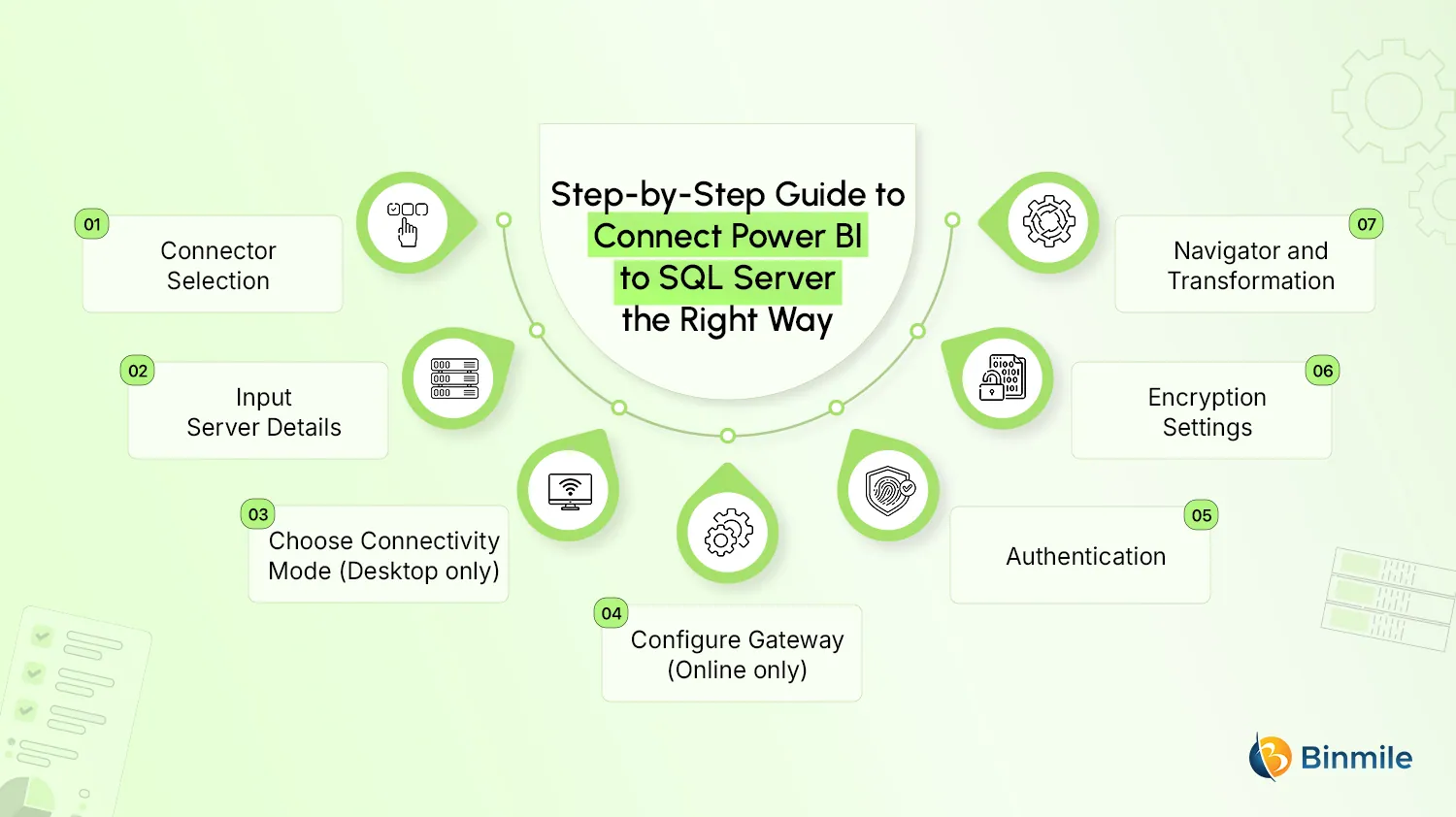
1. Connector Selection
In Power BI, the server database connector tells Power BI which type of data source you’re connecting to.
- Open Power BI Desktop or Power Query Online
- Select the SQL Server database from the available connectors.
2. Input Server Details
This step involves entering the name of your SQL Server and, optionally, the database you want to connect to. It tells Power BI where your data is stored.
- Enter your SQL Server name.
- Optionally include the database name.
- If you’re connecting online and need to specify a port, enter it in this format: servername, portnumber.
3. Choose Connectivity Mode (Desktop only)
You’re deciding whether Power BI imports a copy of the data or runs live queries on the SQL Server. This choice affects data refresh and performance.
- Import: Loads and stores data.
- DirectQuery: Allows live queries.
4. Configure Gateway (Online only)
A gateway links Power BI Online to on-premises data sources. You’ll need it when your SQL Server isn’t publicly accessible.
- If connecting to on-premises data, select an appropriate data gateway.
5. Authentication
Power BI requires verification of your identity before accessing SQL Server. Here’s how you do it.
- Choose authentication methods (Windows, Database, etc.).
- Provide credentials.
- Set the scope for authentication (specific database or entire server).
6. Encryption Settings
Encryption secures data sent between Power BI and SQL Server. You can either accept the default settings or configure them to suit your organization’s needs.
- If the connection isn’t encrypted:
- Power BI Desktop shows a warning dialog: accept or set up encryption.
- In Power Query Online, you may see a “Use Encrypted Connection” checkbox. Uncheck this only if your SQL Server doesn’t support encrypted connections; otherwise, leave it enabled to protect data privacy & security.
- For self-signed certificates, ensure the SQL Server is added to the client’s trust list.
7. Navigator and Transformation
Navigator lets you pick tables or views from the SQL Server. You can load them directly or transform the data before loading.
- Use the Navigator to view and select tables/views.
- Choose: Load (Desktop) or Transform Data to shape data in Power Query Editor. This selection process reflects the data culture in Power BI, promoting curated and purposeful data transformation from the outset.
Power BI to SQL Server: 5 Connection Best Practices You Shouldn’t Skip
Connecting Power BI to SQL Server offers numerous benefits to businesses, including real-time analytics, unified dashboards, and data-driven decision-making. However, to fully realize these benefits, organizations must follow best practices, which we are discussing below:
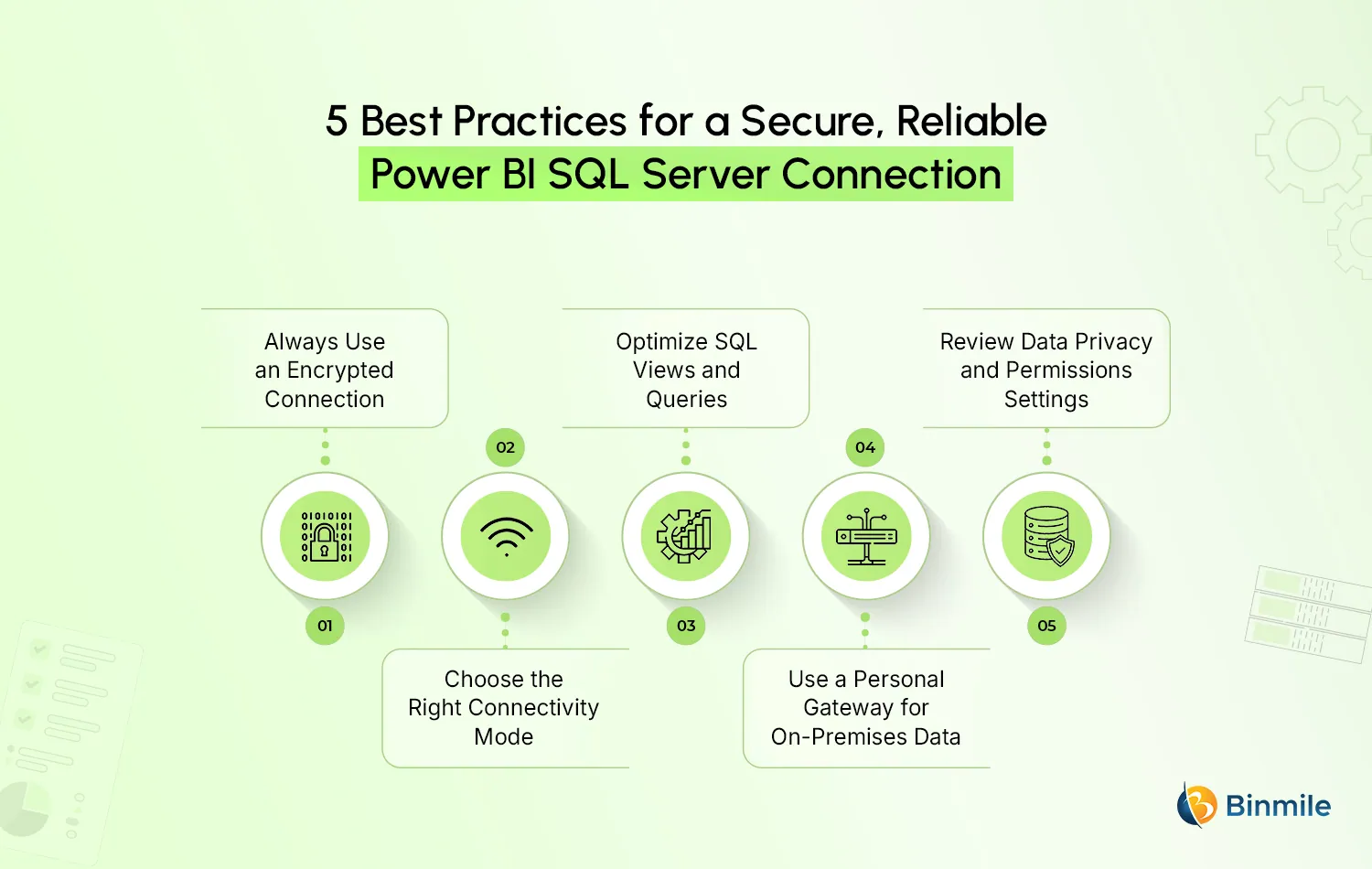
1: Always Use an Encrypted Connection
Secure your data by enabling encryption between Power BI and SQL Server. This helps maintain sensitive information in transit while also assisting you in meeting corporate security regulations and industry standards.
2: Choose the Right Connectivity Mode
Decide between the Import and DirectQuery based on your reporting requirements. Import is recommended when you need static reporting, whereas DirectQuery is the best choice for real-time information, which can impact query performance.
3: Optimize SQL Views and Queries
Avoid unnecessarily overloading large datasets in SQL Server at update time. Use filtered views or indexes, and optimize SQL queries to improve Power BI’s data refresh time and report performance.
4: Use a Personal Gateway for On-Premises Data
Install a personal or an enterprise gateway to access on-premises SQL Server. This ensures stable updates and connectivity, providing both scheduled and on-demand access to requested data. For optimal performance, ensure the gateway setup includes periodic diagnostics and resilience checks to support consistent data access workflows.
5: Review Data Privacy and Permissions Settings
Before connecting, ensure you have access to the data sources in Power BI and set your privacy settings accordingly. Using appropriate data management tools and configurations helps prevent access issues, ensures compliance, and avoids frequent connection errors that occur during refresh or sharing.
5 Common Power BI Connection to SQL Server Errors and How to Fix Them
Power BI users often encounter roadblocks when connecting to SQL Server due to various issues, including setup errors, permissions issues, and query errors. Here are five common connection problems and simple ways to fix them before they slow you down.
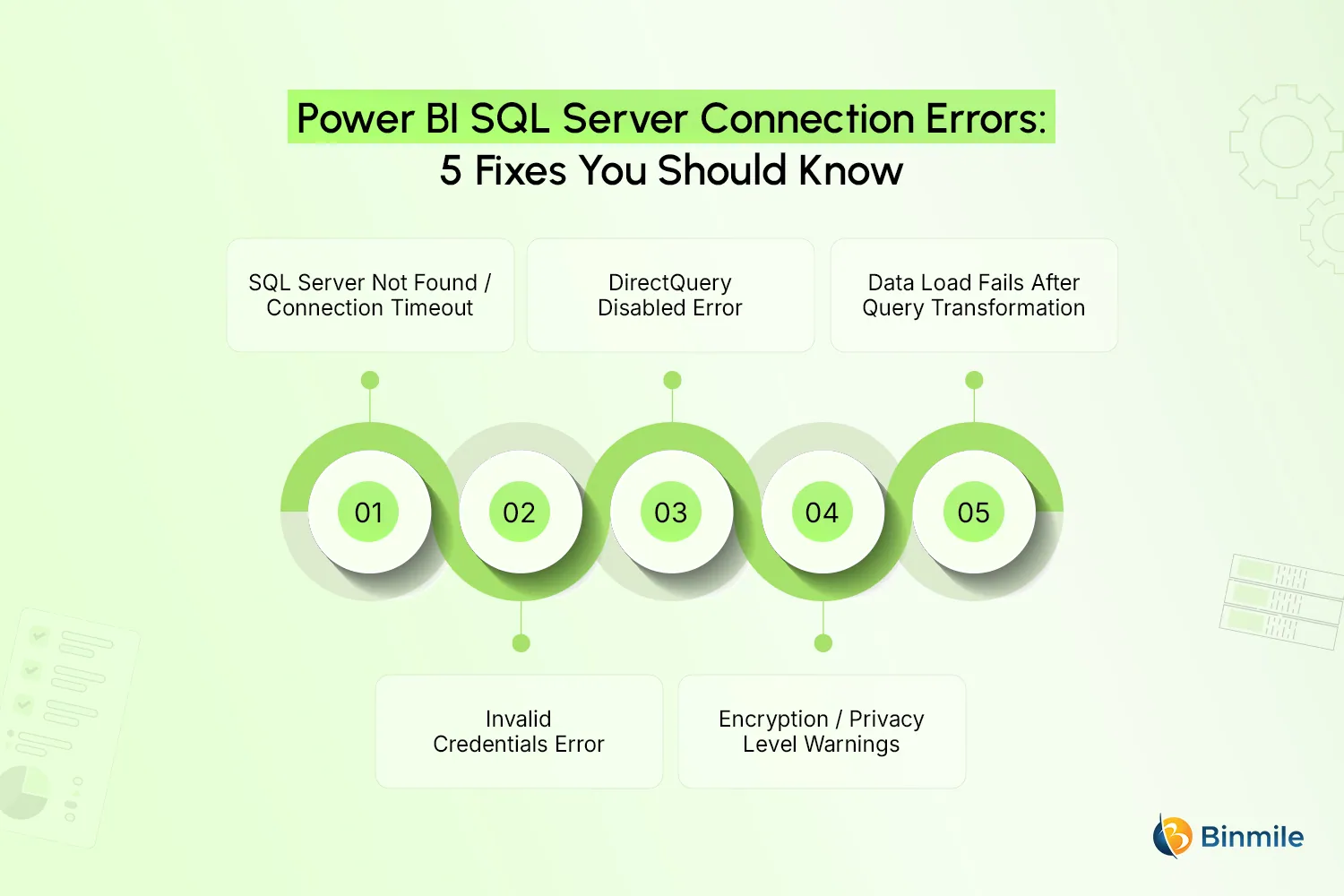
1. SQL Server Not Found / Connection Timeout
Ensure that you have typed the server name correctly and that it can be easily accessed on your network. Additionally, open the SQL Server services to verify if your firewall or VPN is blocking the connection.
2. Invalid Credentials Error
Verify that you are using the correct method of authentication: Windows authentication or SQL login. If the credentials fail again, it may be better to change your password or seek assistance from your database administrator.
3. DirectQuery Disabled Error
Ensure that your version of SQL Server supports DirectQuery (the ability to connect directly to the database and query data without importing it first). There will also be specific permissions required to run queries, even with the supported version, so consult with your administrator if you are unable to use this option.
4. Encryption / Privacy Level Warnings
To avoid running into this error, visit the data source settings in the Power BI application and change the privacy level to suit your own organization’s policy. You should also review your encryptions, particularly when your business has stringent data security measures and policies.
5. Data Load Fails After Query Transformation
When you change a query, also refresh the preview to check for errors. This helps you spot issues before loading the data into your report. If recurring connection issues impact workflow efficiency, consider consulting with a business process consultant to realign your Power BI integration with operational goals.
Key Takeaways from Connecting Power BI to SQL Server
Power BI’s ability to pull data directly from SQL Server is what makes it a practical tool for real-time reporting and analysis. Without this connection in place and working right, you’re stuck with outdated data, manual exports, and unreliable reports. But knowing the steps isn’t always enough. To get real value from Power BI, you need the right setup, a clear data strategy, and reporting systems built around your business goals. In this guide, we’ve covered exactly how to connect Power BI to SQL Server, what can go wrong, and how to fix the common issues that waste time or break your reports.
Of course, setting things up is just the start. What really matters is how you use that connection to get meaningful insights, and that’s where working with an MS Dynamics 365 consulting services partner makes the difference. Power BI experts don’t just handle the setup; they help you move from a functional connection to reports and dashboards and make your data work smarter for your business.
Need help with Power BI connections, troubleshooting, or data strategy? Book a free discovery call and start making your data work for you.
